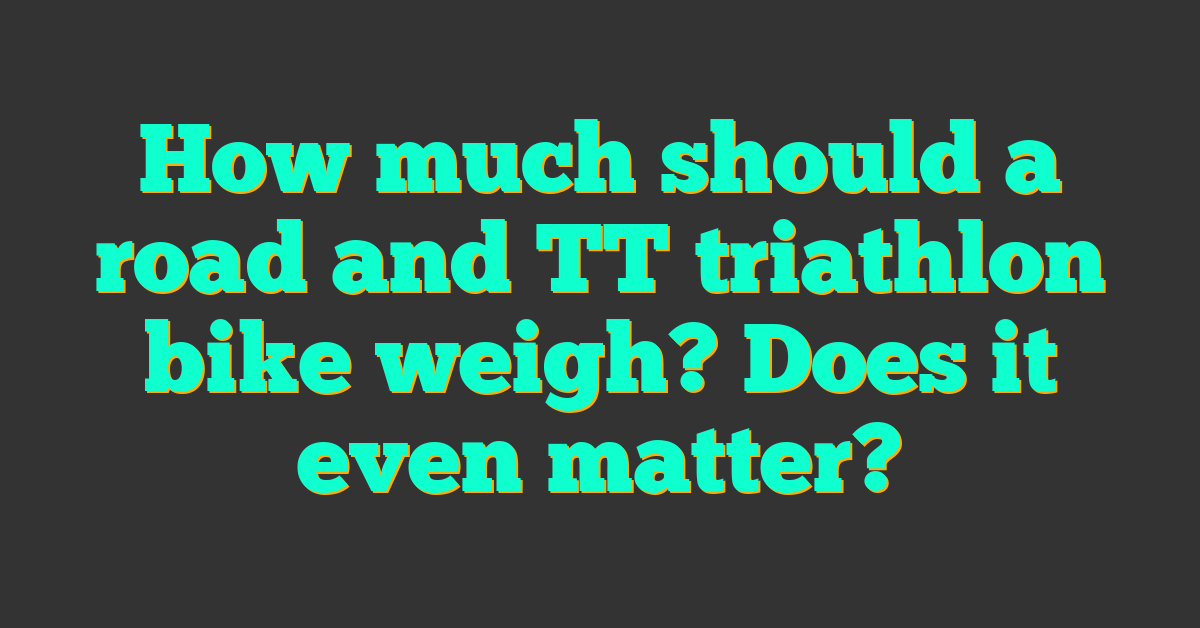If you’re a cyclist, you know how important it is to have the right tires for your bike. Choosing between clincher and tubular tires can be a daunting task, especially if you’re new to the sport. Both types of tires have their pros and cons, and it’s important to understand the differences between them before making a decision.

Clincher tires are the most common type of bike tire. They are easy to install and maintain, and they’re also less expensive than tubular tires. With a clincher, you can quickly replace a flat tire on the road and get back to riding in no time. Tubular tires, on the other hand, are more expensive and require more maintenance. They are lighter and offer a smoother ride, but they’re also more difficult to install and repair. Understanding the differences between clincher and tubular tires can help you make the right choice for your bike.
Key Takeaways
- Understanding the differences between clincher and tubular tires is crucial for choosing the right tire for your bike.
- Clincher tires are more common, less expensive, and easier to install and maintain.
- Tubular tires are lighter, offer a smoother ride, but are more expensive and require more maintenance.
Understanding Bike Tire Types
https://www.youtube.com/watch?v=htPFH_QLwGg&embed=true

When it comes to bike tires, there are three main types to consider: clincher, tubular, and tubeless. Each type has its own pros and cons, so it’s important to understand the differences before making a decision.
Clincher Tires
Clincher tires are the most common type of bike tire. They consist of a tire with a bead that hooks onto the rim, and an inner tube that holds the air. Clincher tires are easy to install and change, and they generally offer good puncture protection. However, they can be prone to pinch flats if the tire pressure is too low, and they are generally not as supple as tubular tires.
Tubular Tires
Tubular tires, also known as “sew-ups,” are less common than clincher tires, but they are still used by many professional cyclists. Tubular tires consist of a tire that is sewn around an inner tube, and then glued onto the rim. Tubular tires are generally lighter and more supple than clincher tires, which can make for a smoother ride. They are also less prone to pinch flats, but they can be difficult to install and change, and they are generally more expensive than clincher tires.
Tubeless Tires
Tubeless tires are a newer type of bike tire that are becoming increasingly popular. Tubeless tires do not use an inner tube; instead, the tire itself creates an airtight seal against the rim. This means that tubeless tires are less prone to flats, and they can be run at lower pressures for a smoother ride. However, tubeless tires can be more difficult to install and change than clincher tires, and they generally require the use of sealant to maintain the airtight seal.
Overall, when choosing a bike tire, it’s important to consider factors such as tire pressure, puncture protection, and ease of installation. Clincher tires are a good all-around choice for most riders, while tubular tires are a good choice for those looking for a smoother ride and better puncture protection. Tubeless tires are a good choice for those looking for the ultimate in puncture protection and a smooth ride, but they can be more difficult to install and maintain.
Installation and Maintenance
https://www.youtube.com/watch?v=T3m0HdL0eaU&embed=true
Mounting Clincher and Tubular Tires
When it comes to installing clincher and tubular tires, there are some key differences to keep in mind. Clincher tires are the most common type of bike tire, and they are relatively easy to install. You simply fit the tire onto the rim and then inflate it with a pump.
Tubular tires, on the other hand, require a bit more effort to install. First, you need to glue the tire onto the rim. This can be a messy process, but it’s essential for ensuring that the tire stays in place during use. Once the glue has dried, you can then inflate the tire with a pump.
Repair and Replacement
When it comes to repairing and replacing bike tires, clinchers have a clear advantage. If you get a puncture, you can simply remove the tire from the rim, replace or patch the inner tube, and then re-inflate the tire. This can be done relatively quickly and easily, even on the side of the road.
Tubular tires, on the other hand, require a bit more effort to repair. If you get a puncture, you need to remove the tire from the rim, remove the old glue, patch the puncture, and then re-glue the tire onto the rim. This is a more time-consuming process, and it’s not something that you can easily do on the side of the road.
In terms of replacement, clinchers are also easier to deal with. If you need to replace a worn-out tire, you simply remove the old tire from the rim and then fit the new tire onto the rim. With tubular tires, you need to remove the old tire, clean off the old glue, and then glue the new tire onto the rim.
Overall, if you’re looking for a tire that is easy to install, repair, and replace, then clinchers are the way to go. However, if you’re willing to put in a bit more effort for the sake of performance, then tubular tires may be a better choice.
Performance and Riding Experience
https://www.youtube.com/watch?v=A4dGMDtsq64&embed=true
When it comes to performance and riding experience, clincher and tubular tires differ in several ways. Here are some of the key differences between the two types of tires.
Comfort and Ride Quality
Clincher tires are generally considered to be more comfortable and provide a smoother ride than tubular tires. This is because clincher tires have a larger air volume, which helps to absorb bumps and vibrations on the road. Additionally, clincher tires can be run at lower pressures than tubular tires, which also contributes to a more comfortable ride.
On the other hand, tubular tires are known for their supple ride quality. This is because they have a round profile and are glued directly to the rim, which allows them to conform to the road surface more easily. However, this supple ride quality comes at the cost of increased rolling resistance, which we’ll discuss in the next section.
Speed and Rolling Resistance
When it comes to speed and rolling resistance, clincher tires are generally faster than tubular tires. This is because clincher tires have a lower rolling resistance than tubular tires, which means that they require less energy to maintain a given speed. Additionally, clincher tires are typically lighter than tubular tires, which also contributes to their faster speed.
However, it’s worth noting that the difference in speed between clincher and tubular tires is relatively small. The actual speed difference will depend on a variety of factors, such as the specific tires being compared, the rider’s weight and riding style, and the road conditions.
Grip and Handling
« Chris “Macca” McCormack Joins Rich Roll on Latest Podcast Episode
Clipless Pedals Cleats: A Guide to SPD, Look, and Speedplay »
When it comes to grip and handling, both clincher and tubular tires have their strengths and weaknesses. Clincher tires are generally considered to provide better grip in wet conditions, thanks to the tread pattern on the tire. Additionally, clincher tires are easier to change in the event of a flat, which can be a big advantage if you’re racing or riding in remote areas.
On the other hand, tubular tires are known for their superior handling and cornering ability. This is because tubular tires have a round profile and are glued directly to the rim, which allows for a more seamless transition between the tire and the rim. Additionally, tubular tires are less likely to pinch flat, which can be a big advantage if you’re riding over rough terrain or hitting big bumps.
In summary, both clincher and tubular tires have their strengths and weaknesses when it comes to performance and riding experience. The best choice for you will depend on your riding style, preferences, and the conditions you’ll be riding in.
Pros and Cons of Tire Choices
https://www.youtube.com/watch?v=HF5XK-JSJL0&embed=true
Advantages of Each Tire Type
When it comes to choosing between clincher and tubular bike tires, each option has its own set of advantages. Clincher tires are the most common type of tire and are generally less expensive than tubular tires. They are also easier to install and remove, making them a popular choice for many recreational cyclists. Additionally, fixing flats on clincher tires is relatively easy by patching or replacing the inner tube.
On the other hand, tubular tires have a few advantages over clincher tires. They are lighter, which can improve your bike’s performance. They also have a better ride quality due to their ability to absorb shocks and vibrations. Tubular tires are also less prone to pinch flats, which can occur when the inner tube is pinched between the tire and the rim.
Potential Drawbacks
While clincher tires are generally less expensive than tubular tires, they do have a few potential drawbacks. They are more prone to pinch flats, which can be a major inconvenience when out on a ride. Additionally, clincher tires require a higher air pressure, which can make them less comfortable compared to tubular tires. Finally, clincher tires can be more difficult to mount and remove, especially for novice cyclists.
Tubular tires also have a few potential drawbacks. They are more expensive than clincher tires, which can be a significant factor for some cyclists. Additionally, fixing flats on tubular tires can be more difficult and time-consuming. Finally, tubular tires require a special rim and glue or tape to attach them to the wheel, which can be a hassle for some cyclists.
In conclusion, both clincher and tubular bike tires have their own set of advantages and disadvantages. Your choice ultimately comes down to your personal preferences and priorities. If you prioritize cost and ease of use, clincher tires may be the better choice for you. However, if you prioritize performance and ride quality, tubular tires may be the better choice.
Selecting the Right Tire for Your Bike
https://www.youtube.com/watch?v=Ie9R2nhc-rQ&embed=true
When it comes to selecting the right tire for your bike, there are several factors to consider. Your choice of tire can have a significant impact on your cycling experience, so it’s essential to choose wisely. Here are some factors to consider before making your selection.
Factors to Consider
Discipline
The type of cycling discipline you engage in is a crucial factor to consider when selecting a tire. For example, if you are a professional road cyclist, you will need a tire that is designed for speed and performance. On the other hand, if you are a commuter, you will need a tire that is durable and can handle different road conditions.
Size
The size of your tire is another essential factor to consider. Road bike tires are typically narrower than mountain bike tires. Therefore, it’s crucial to select a tire that is the correct size for your bike.
Tire Type
There are three types of tires to consider: tubular tires, clincher-specific tires, and tubeless tires. Tubular tires are the lightest and preferred by professional road cyclists. Clincher-specific tires are the most common and are suitable for most cycling disciplines. Tubeless tires are becoming increasingly popular and are suitable for off-road cycling.
Tire Casing
The tire casing is the layer that sits between the tire tread and the inner tube. A high-quality tire casing can improve the durability and performance of your tire. Therefore, it’s essential to consider the quality of the tire casing when selecting a tire.
Tire Recommendations by Bike Type and Use
Road Bikes
For road bikes, it’s recommended to use clincher-specific tires. These tires are suitable for high-speed cycling and offer excellent puncture protection. Some popular options include the Continental Grand Prix 5000 and the Michelin Power Competition.
Mountain Bikes
For mountain bikes, it’s recommended to use tubeless tires. These tires offer excellent traction and puncture protection, making them ideal for off-road cycling. Some popular options include the Maxxis Ardent and the Schwalbe Nobby Nic.
Gravel Bikes
For gravel bikes, it’s recommended to use tubeless tires. These tires are suitable for off-road cycling and offer excellent puncture protection. Some popular options include the WTB Riddler and the Panaracer GravelKing.
Racing Bikes
For racing bikes, it’s recommended to use tubular tires. These tires are lightweight and offer excellent performance. Some popular options include the Continental Competition and the Vittoria Corsa.
Commuter Bikes
For commuter bikes, it’s recommended to use clincher-specific tires. These tires are durable and offer excellent puncture protection. Some popular options include the Schwalbe Marathon and the Continental Gatorskin.
Triathlon Bikes
For triathlon bikes, it’s recommended to use tubular tires. These tires are lightweight and offer excellent performance. Some popular options include the Continental Grand Prix 4000 and the Vittoria Open Corsa.
In conclusion, selecting the right tire for your bike is essential to ensure a safe and enjoyable cycling experience. Consider the factors mentioned above and select a tire that is suitable for your cycling discipline and bike type.
Frequently Asked Questions

What are the main differences between clincher and tubular tires?
Clincher tires are the most common type of tire for road bikes. They have a bead that hooks onto the wheel’s rim, and they require an inner tube to hold air. In contrast, tubular tires are glued onto the rim and do not require an inner tube. Clincher tires are easier to install and remove than tubular tires, and they are also less expensive. However, tubular tires provide a smoother ride and better performance due to their seamless construction.
How can I tell if my rims are compatible with clincher tires?
Most rims are compatible with clincher tires. However, it is important to check the rim’s width to ensure that it matches the tire’s width. The rim’s width should be slightly wider than the tire’s width for optimal performance. You can find the recommended tire width on the tire’s sidewall.
Is there a performance advantage to using tubular tires like the pros?
Tubular tires are the preferred choice for professional cyclists because they provide a smoother ride and better performance. They have a seamless construction that eliminates the friction between the tire and the rim, which reduces rolling resistance and increases speed. However, they are also more expensive and require more maintenance than clincher tires.
Can you convert tubular rims to support clincher tires?
It is possible to convert tubular rims to support clincher tires, but it is not recommended. The conversion process requires removing the tubular tire and glue residue, which can damage the rim. Additionally, the rim’s width may not be compatible with the clincher tire, which can affect performance.
What are the benefits of tubeless clincher tires?
Tubeless clincher tires are becoming increasingly popular due to their ability to provide a smoother ride and reduce the risk of punctures. They do not require an inner tube, which reduces the weight of the tire and eliminates the risk of pinch flats. Additionally, they can be run at lower pressures, which increases traction and comfort.
Are folding tires considered a type of clincher, and how do they compare?
Folding tires are a type of clincher tire that is designed to be lightweight and easy to store. They are made with a Kevlar or carbon bead that allows them to be folded without damaging the tire. Folding tires are more expensive than traditional clincher tires, but they provide better performance due to their lighter weight and lower rolling resistance.










